Hohner Marine Band – The Definitive History
Hohner’s Marine Band diatonic harmonica has been a mainstay of the German brand’s range for over 120 years. Let’s take a look at its history, how it has influenced the development of countless other harmonicas, and how current models compare to those which are now antiques.
What is a Hohner Marine Band?
When most players picture a Marine Band harmonica, they visualise a classic nailed-together ten hole blues harp, with a wood comb and brass reeds. Whilst this is partially accurate, Hohner, over the years, has used the Marine Band name to refer to a whole host of different harmonicas, from the 12 hole 364/24s to the plastic combed Special 20. We’ll delve into this in more detail later in this article, but, for the sake of simplicity, when we refer to ‘Marine Band’ without any further designations, we are discussing the classic ten hole model that has undergone various revisions over the years, but is still available, as the 1896 model, in a design that would be familiar to the Victorian players of the very first Marine Bands.
When was the First Hohner Marine Band Manufactured?
Hohner had been manufacturing harmonicas for several decades before the release of the Marine Band, whose design was patented in 1896. Confusingly, initial models from this period with the 1896 model number were sometimes sold as the ‘Marine Orchestra’, ‘Orpheus’ or ‘Up To Date’ in various markets. As an aside here, it is always interesting to witness the sheer amateurishness of Victorian/Edwardian marketing – today no company in their right mind would use such a ridiculous phrase as ‘up to date’ as a product name!
Early Marine Band Models
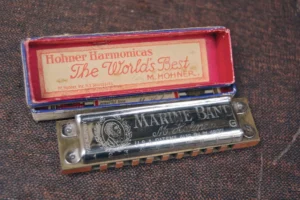
Models of Marine Band harmonica from before the middle of the 1930s are visually distinguishable from later models by their ‘Mickey Mouse’ cover plates. This refers to the circular tabs where the cover plates are nailed to the comb. This distinctive feature was lost on all later Marine Band models, with the exception of the 125 Anniversary Marine Band, which replicates the aesthetics (but, crucially, not the temperament) of a 1920s 1896.
Most changes during the pre-war period were aesthetic, although there were some minor alterations to the rolling of the cover plates at the rear. One important aesthetic change, from a historical perspective, however, was the removal of the embossed star on the cover plates, whose five points were said to represent Herr Hohner’s five sons. This seemingly innocuous symbol was likely to have been seen as potentially detrimental to Hohner’s standing with the Nazi party in the 1930s and 1940s, so was quietly removed.
Post-War Marine Bands
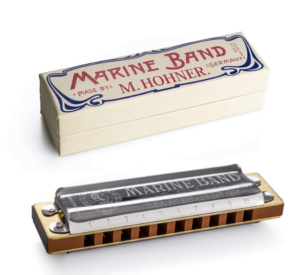
Post-war Marine Bands remained largely unchanged from their pre-war siblings until the early 1980s, when a plastic case replaced the the venerable cardboard one. Later in the 1980s the Marine Band reed plates had their temperaments altered in series of changes, moving from the 7 limit Just Intonation that had been a feature of the harp since its creation, to various compromised temperaments. Interestingly, the latest 1896 models have moved back to a tuning closer to Just Intonation, signalling the start, perhaps, of an eventual full circle movement?
During the 1990s, Hohner made a somewhat disastrous foray into machine built harmonicas with its initial MS range, This featured a poorly received MS Marine Band, which was quickly pulled from the market, but which led to the ‘hand made’ moniker being added to 1896 models in order to distinguish them (and presumably to stop sales being hurt through confusion with the MS Marine Band).
A further change, made in 2000, saw the 1896 gain stainless steel reed plates rather than nickel coated mild steel ones, then the final update came in 2011, when sealing of the pearwood comb was introduced, making the Marine Band a little more resistant to swelling.
Marine Band Today
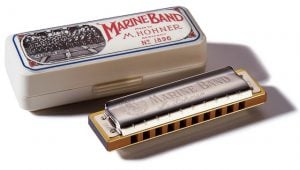
The Marine Band 1896 is now part of a larger range of harmonicas that fall within the Marine Band Series. These all share a similar architecture and feature wood combs, but are quite different. Let’s take a closer look at the various models on offer:
Marine Band 1896: This is the closest harmonica to the original Marine Band, and still has nailed together construction, a pearwood comb, and the same size and shape of reeds as its forebears.
Marine Band Deluxe: A significant increase in price over the 1896 model gives you bolted together construction, upgraded reed plates and a triple sealed comb, which is significantly more resistant to swelling than the standard Marine Band.
Marine Band Crossover: This takes the construction and footprint of the Deluxe and adds further upgrades to the reed plates and an extremely swell resistant bamboo comb.
Marine Band Thunderbird: This is the low tuned iteration of the Crossover and has slanted cover plates to enable sufficient air space for the larger reeds.
Outside of this series lies the 364/24 Marine Band, which is fundamentally a 12 hole version of the 1896, albeit one that has the option of a chromatic-like solo tuning.
How Has The Marine Band Been Influential?
The Marine Band’s influence on the world of harmonicas and popular music cannot be overstated. Marine Bands have been a staple of almost every influential 10 hole player, from Bob Dylan to Little Walter, and their distinctive sound has been featured on hundreds of hit records. From a design point of view, it’s the most famous and copied harmonica in existence, and the fact that it is still sold today in a form that is not significantly different from that first produced over a century ago is a testament to the inherent rightness of the original design.
Which Marine Band Harmonica Should I Buy?
Many players see images or footage of Sonny Boy Williamson playing a 7 limit just intonation Marine Band and assume this is what they need to get the authentic blues sound. They feel that these is something inherently better about these pre-1980s harmonicas. This sentiment is mirrored in the vintage guitar world, where pre-CBS Fenders and early Gibson Les Pauls command stratospheric prices. The truth, however, is that there is nothing particularly special about these vintage harps; the famous players who used them did so more through expediency than anything else. In short, the Marine Band was one of the few decent harmonicas widely available in the 1950s and 1960s, ergo most blues players from this era used them.
For players looking for a traditional sound and feel, and who don’t mind fiddling around with nails when replacing reed plates, the 1896 is still one of the best sounding harmonicas on the market. It’s also fairly economically priced for a German made harp.
Players who prefer easy ergonomics, and/or are prone to causing combs to swell will be better served by the Deluxe or Crossover. Of the two, the Crossover is, in my opinion, the superior harmonica, but it is slightly more expensive than the Deluxe; something that adds up when buying a complete set.
The Thunderbird and 364 are both harmonicas that suit special use cases, but are also both excellent instruments. The former is one of the best sounding and playing low tuned harmonicas on the market, and the latter is one of the few 12 hole harmonicas that is widely available.

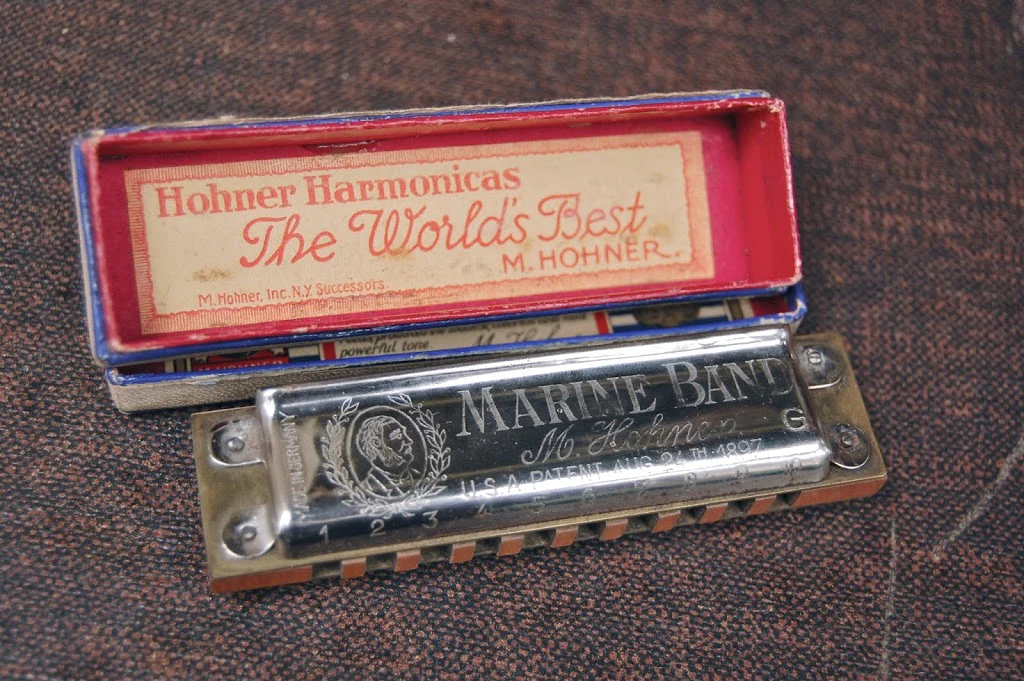
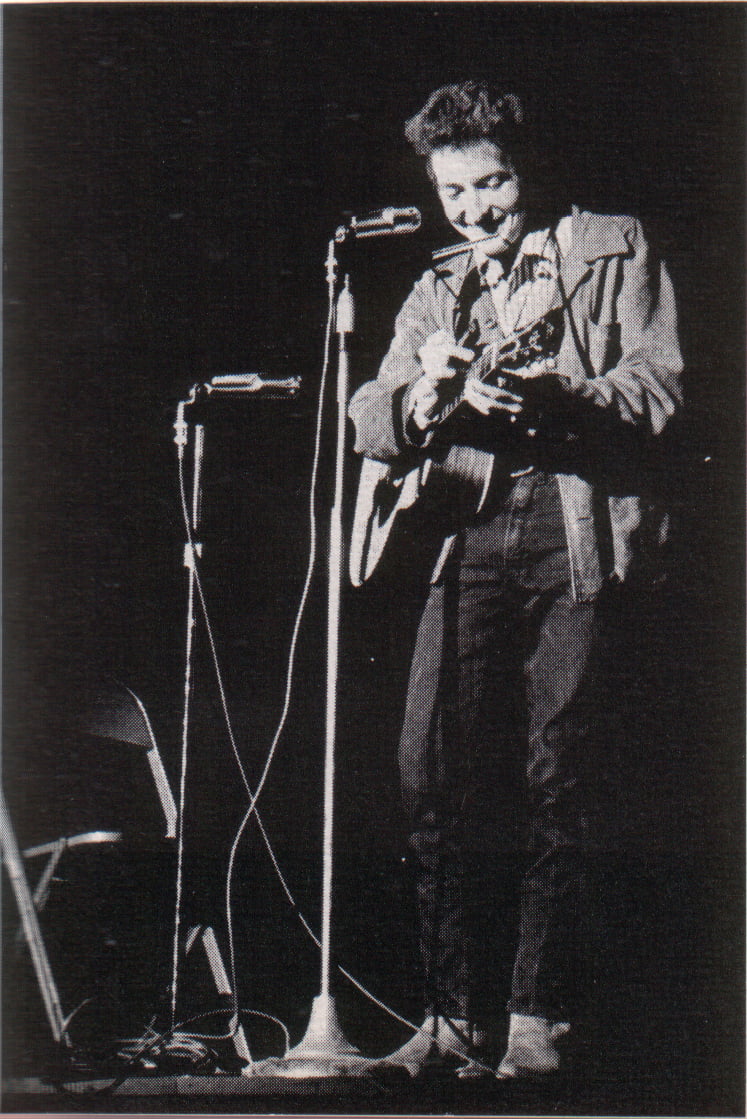
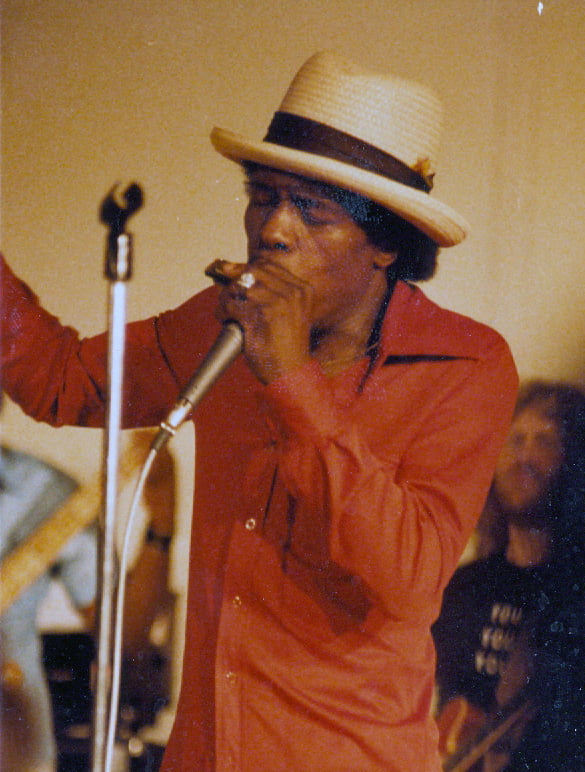
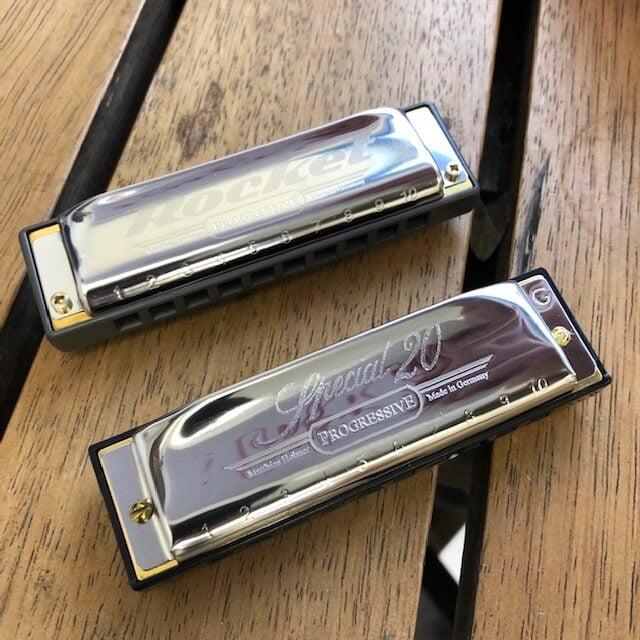
I recently inherited a hohner harmonica it is old and has 6 individual harmonicas all in one is there any value in this instrument thanks
Sounds like a six-sided sextet. Value would be around 40% of current RRP if in very good condition.